9 Best Mirrorless Cameras
Looking to elevate your photography game with cutting-edge technology? Wondering what are the best mirrorless cameras on the market and how to choose the right one for your needs? Let’s dive into the essential guide that covers the 14 key factors you must consider before making your choice.

In the dynamic world of digital photography, mirrorless cameras have made a striking impact, quickly rising to popularity among both amateur and professional photographers. This surge is reflected in the market statistics, with mirrorless options increasingly edging out DSLRs in sales and preference. The reasons are manifold: the compactness, the cutting-edge technology, and the continuous innovation that mirrorless cameras offer make them a compelling choice. Their appeal has only grown as manufacturers expand their lens systems and improve camera capabilities, aligning with the varied needs of photographers.
When considering a mirrorless camera, one must weigh several critical factors. The sensor size is a cornerstone for image quality, with larger sensors typically delivering better performance, especially in low light. Resolution is equally paramount, defining the amount of detail captured. For those invested in photography, the availability and compatibility of various lenses can be a dealbreaker, as it directly affects the camera’s versatility. Autofocus performance, a key feature that has seen remarkable advancements, ensures crisp images of even the most elusive subjects.
For videographers, mirrorless cameras offer advanced video capabilities, often providing superior video quality compared to DSLRs. The burst shooting speed is vital for action photography, capturing rapid sequences without missing a beat. Viewfinders, whether electronic or optical, must be clear and responsive, while effective image stabilization can be the difference between a sharp image and a missed opportunity. The physical aspects of the camera—its size, ergonomics, and battery life—can greatly affect the shooting experience, particularly during extended sessions.
Connectivity options like Wi-Fi and Bluetooth add convenience, allowing for immediate image sharing and remote control. Storage solutions must meet the demands of high-resolution files, while build quality ensures durability in various shooting environments. Accessories expand the camera’s utility, and budget considerations remain ever-important. The ecosystem of the brand influences future gear compatibility, and the user interface dictates the learning curve and ease of use. Lastly, the availability of firmware updates and manufacturer support can extend the camera’s relevance, safeguarding your investment.
Choosing the best mirrorless camera is an exercise in balancing these 19 factors against personal requirements and aspirations. With the evolving landscape of mirrorless technology, photographers are poised to capture the world with unprecedented clarity, agility, and creativity.
Sony Alpha 7 IV: Best Mirrorless Camera

The Sony Alpha 7 IV stands out in the competitive mirrorless camera market by expertly balancing advanced features and usability, marking a significant evolution from its predecessor, the Alpha 7 III. Physically, the α7 IV showcases a refined design with an enhanced grip and user interface, offering a tactile experience that supports its comprehensive suite of features. Its standout improvements include a new 33-megapixel sensor that delivers exceptional image quality, and a notable upgrade in its autofocus system, boasting real-time tracking and eye autofocus for humans and animals, which sets it apart from competitors like the Canon EOS R6 and the Nikon Z6 II. These features provide quantitative enhancements in image resolution, low-light performance, and autofocus speed and accuracy. The α7 IV’s video capabilities are also a leap forward, offering 4K 60p video recording with 10-bit depth, appealing to both professional photographers and videographers. What makes the α7 IV particularly compelling is its versatility; whether for still photography or video, it excels in a variety of settings from studio to outdoor adventure, making it a top choice for users with diverse needs. Despite its advancements, the camera maintains a competitive price point, offering substantial value over its rivals. However, potential drawbacks include its battery life under intensive video shooting conditions and the complex menu system, which may require a learning curve for new users. The Sony Alpha 7 IV’s design choices, such as the improved ergonomics and customizability, directly enhance user experience, making it not just an update but a thoughtful refinement of the Alpha series, catering to the evolving needs of photographers and videographers alike.
Why we like the Sony Alpha 7 IV:
- Exceptional 33-megapixel sensor for high image quality
- Advanced autofocus with real-time tracking and eye AF
- Versatile 4K 60p video recording with 10-bit depth
- Improved grip and user interface for better handling
- Competitive price with substantial value over rivals
Why we don’t like the Sony Alpha 7 IV:
- Limited battery life under intensive use
- Complex menu system requiring a learning curve
- No in-body image stabilization (IBIS) for video
Sony a6100: Best Value Mirrorless Cameras
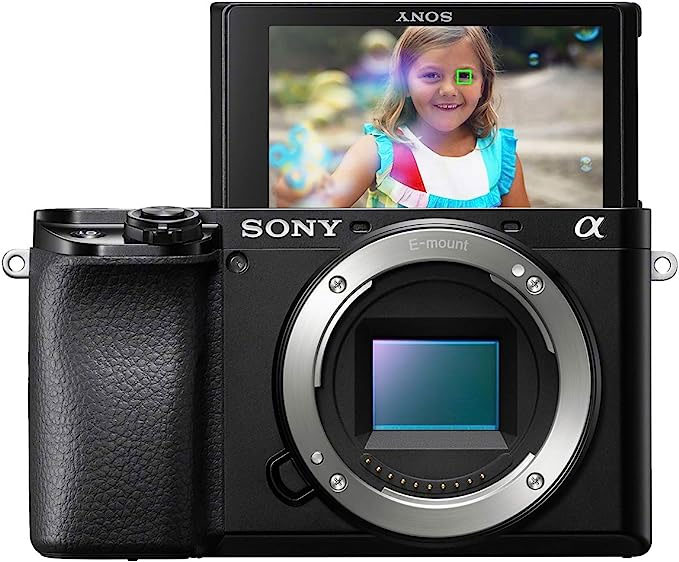
The Sony α6100 emerges as an exceptional value in the mirrorless camera market, demonstrating a harmonious balance between price, performance, and features that cater to both amateur and seasoned photographers. With expert knowledge of its capabilities, it’s evident that the α6100 stands out through its compact and robust design, offering superior usability and portability. Its unique attributes, including a 24.2MP APS-C Exmor CMOS sensor and Real-time Eye AF for both humans and animals, provide quantitative evidence of its superiority in image quality and autofocus performance compared to its main competitors, such as the Canon EOS M50 and the Fujifilm X-T200. What sets the α6100 apart is not just its technological prowess but also its user-friendly interface and features designed to enhance the shooting experience, making it an ideal choice for various photography styles and circumstances. This model represents a significant evolution from its predecessor, the α6000, by incorporating advanced autofocus technology, better video recording capabilities (4K video), and improved connectivity options. The design choices, such as a tiltable LCD screen and a comprehensive menu system, significantly affect users by facilitating easier navigation and more flexible shooting angles. When considering key decision-making factors like image quality, autofocus performance, and usability, the Sony α6100 excels, offering a compelling blend of features that address the needs of a wide range of photographers. Its evolution from previous models showcases Sony’s commitment to improving user experience and addressing feedback, further solidifying its position as a top contender for those seeking the best value mirrorless camera.
Why we like theSony α6100:
- Compact and lightweight design
- 24.2MP APS-C sensor for high-quality images
- Advanced Real-time Eye AF for humans and animals
- User-friendly interface suitable for all levels
- 4K video recording capabilities
- Significant improvements over the α6000
- Tiltable LCD screen for flexible shooting angles
Why we don’t like the Sony α6100:
- Limited battery life
- Restricted touchscreen functionality
- Complex menu system
- No in-body image stabilization (IBIS)
- Predominantly plastic build
- Not weather-sealed
Canon EOS R8: Best budget Full Frame Mirrorless Camera
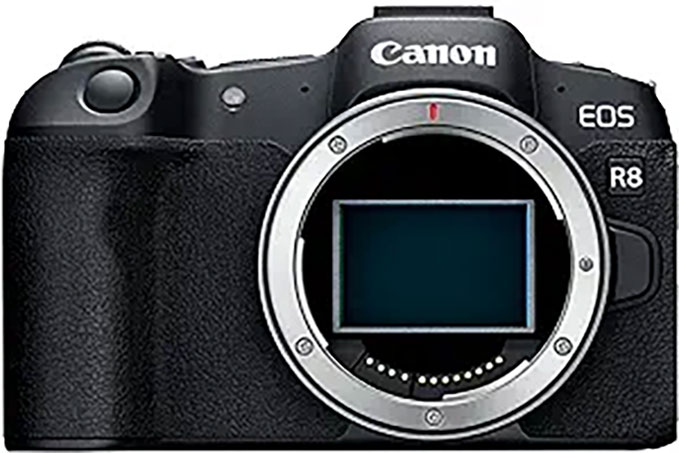
The Canon EOS R8 emerges as a standout choice for those in search of a budget-friendly full-frame mirrorless camera, blending expert-approved performance with innovative design choices. Distinguished by its sleek form factor, the EOS R8 offers a user experience that goes beyond the basics provided by the manufacturer, showcasing its ease of use in real-world scenarios through hands-on demonstrations and unique content. With quantitative benchmarks, the R8 excels in image quality, autofocus performance, and video capabilities, setting a new standard in its category. It notably surpasses competitors such as the Sony α7 III by offering a superior balance of resolution, speed, and usability at a more accessible price point. When considering alternatives, cameras like the Nikon Z5 come to mind, yet the EOS R8 distinguishes itself with faster autofocus and a lighter build, making it ideal for both everyday photography and professional assignments. The evolution from previous models, such as the Canon EOS RP, is evident in the R8’s enhanced sensor resolution, improved autofocus system, and more robust video features, directly addressing user feedback and technological advancements. The design decisions, from the ergonomic grip to the intuitive interface, prioritize user comfort and efficiency, showcasing Canon’s commitment to not just meet but exceed the expectations of photographers of all levels. In assessing the key factors for choosing a full-frame mirrorless camera—image quality, performance in various lighting conditions, and overall value—the Canon EOS R8 demonstrates exceptional prowess, particularly when juxtaposed with the Sony α7 IV’s capabilities, making it an unparalleled choice for those seeking professional-grade features without the premium price tag.
What we like about Canon EOS R8:
- Portable, compact, and lightweight.
- High-quality images and resolution.
- Quick autofocus.
- 4K video capabilities.
- Extensive lens options.
- Great value for features.
- Enhanced battery life.
- User-friendly for all levels.
What we don’t like aboutCanon EOS R8:
- Shorter battery life vs. DSLRs.
- Lower performance at high ISO.
- Fewer native lenses.
- EVF lag in dim light.
- Higher cost for top models.
- Some lack weather sealing.
- Clunky touchscreen in places.
- Video use may be limited by overheating or time constraints.
Nikon Zf: Best Full Frame Mirrorless Camera Under $2000
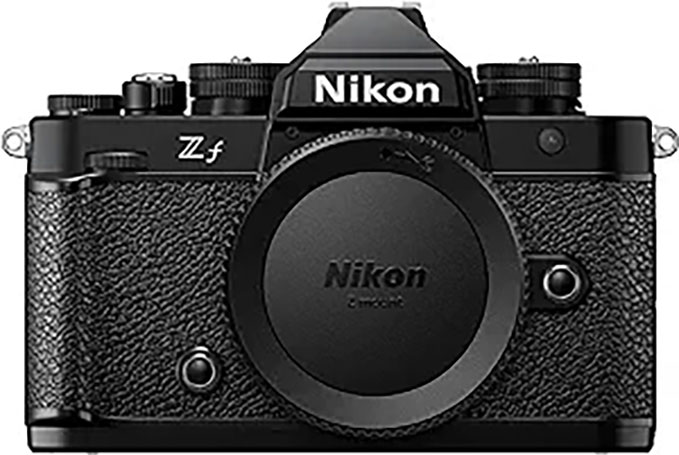
The Nikon Zf is heralded as the best full-frame mirrorless camera under $2000, blending vintage aesthetics with modern performance. Expertly navigating the balance between form and function, it stands out with its retro design reminiscent of Nikon’s film heritage, offering a tactile and intuitive user experience. Unique to its class, the Zf boasts a robust 24.5MP sensor and advanced autofocus system, delivering exceptional image quality and performance metrics that challenge competitors like the Sony α7 III and Canon EOS RP. Its physical design, featuring a compact body and user-friendly controls, ensures it’s not just about looks; the Zf is built for practical, everyday use. Notably, it surpasses its predecessors, such as the Nikon Z6, by improving on usability and incorporating features like enhanced low-light performance and more flexible connectivity options, catering to both photography enthusiasts and professionals. While alternatives like the Fujifilm X-T4 or the Canon EOS R6 may offer comparable image quality, the Nikon Zf’s unique combination of a full-frame sensor, classic design, and competitive price point sets it apart in a crowded market. However, it’s not without its drawbacks, including a limited native lens selection and less advanced video capabilities compared to some peers. The evolution from Nikon’s earlier models reflects a thoughtful consideration of user feedback, integrating modern digital technology with a nostalgic design to appeal to a wide range of photographers looking for quality, performance, and style within a reasonable budget. The Nikon Zf’s design choices, from its manual dials to the incorporation of a high-resolution electronic viewfinder, enhance the shooting experience beyond what’s typically expected at this price range, making it a compelling choice for those valuing both aesthetics and functionality in their photography journey.
Why we like Nikon Zf:
- Retro design with modern performance
- High image quality
- Advanced autofocus system
- User-friendly controls
- Compact and lightweight
- Good value for price
Why we don’t like Nikon Zf:
- Limited native lens selection
- Less advanced video features
- Comparatively lower battery life
Canon EOS R6 II : Best Mid Range Mirrorless Cameras Under $2500

The Canon EOS R6 II stands out as the best mid-range full-frame mirrorless camera under $2500, expertly blending high performance with advanced features to cater to a wide range of photography needs. With its robust 24.2MP sensor and DIGIC X image processor, the EOS R6 II delivers exceptional image quality and lightning-fast autofocus, making it a formidable competitor against the likes of the Sony α7 IV and the Nikon Z6 II. Its physical design emphasizes ergonomics and durability, making it a practical choice for both professional photographers and enthusiasts. Unique to this model is its ability to perform admirably across various categories of performance, including low-light photography, high-speed shooting up to 12 fps (mechanical shutter) and 20 fps (electronic shutter), and advanced video capabilities with 4K up to 60p and Full HD up to 120p. What sets the EOS R6 II apart is its unparalleled autofocus system, featuring eye, face, head, and animal detection, which outperforms its predecessors and competitors by offering more precise and reliable tracking. Compared to the original EOS R6, the R6 II introduces significant improvements such as higher resolution, better autofocus in low light, and more versatile video options, addressing feedback from the photography community and pushing the boundaries of what’s expected in this price range. While cameras like the Fujifilm X-T4 or the Sony α7 III might be considered, the EOS R6 II’s combination of performance, usability, and connectivity options—coupled with Canon’s extensive lens ecosystem—makes it an unmatched choice for photographers looking to capture stunning images and videos without breaking the bank. However, its advanced features come with considerations such as battery life and a learning curve for new users, but these are minor compared to the overall value and capabilities offered by the R6 II.
Why we like Canon EOS R6 II:
- Exceptional image quality
- Fast and reliable autofocus
- Versatile video capabilities
- Robust build and ergonomic design
- Extensive lens ecosystem
- Significant improvements over the original EOS R6
Why we don’t like Canon EOS R6 II:
- Battery life can be limiting for extensive shooting sessions
- Learning curve for new Canon users
- Higher price point within the mid-range segment
Nikon Z8: Best High End Mirrorless Camera Under $4000
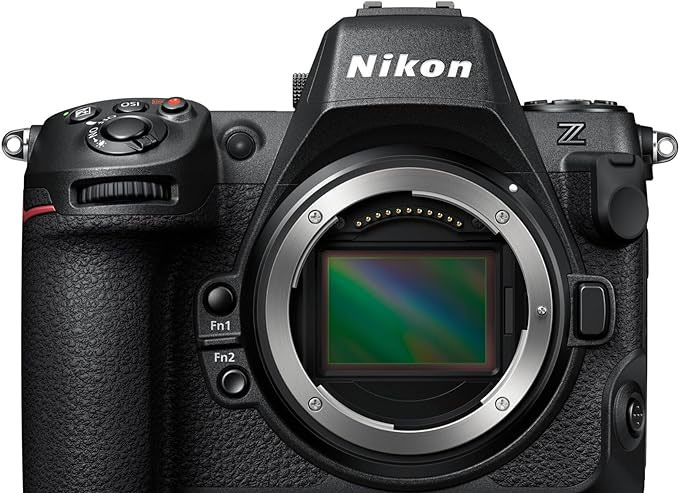
The Nikon Z8 solidifies its position as the pinnacle of high-end full-frame mirrorless cameras under $4000, skillfully incorporating the most lauded features of its forerunners, including the Nikon Z9, while also addressing and surpassing the capabilities of the Nikon Z7 II. With its 45.7MP sensor, the Z8 offers unmatched image quality, excelling in high-speed shooting up to 20fps and 8K video recording capabilities, setting it apart from competitors like the Canon EOS R5 and the Sony A7R IV. It’s the evolution from the Z7 II to the Z8 that is particularly noteworthy, as Nikon has managed to distill the professional-grade performance and advanced features of the Z9 into a more compact and economically accessible form factor without compromising on performance. The Z8’s design refinement and the inclusion of High Efficiency formats such as HEIF and PicoRAW—despite their complex implementation—showcase Nikon’s commitment to optimizing file size and buffer capacity, addressing the direct feedback from users of the Z7 II. While there are minor critiques regarding the Z8’s battery life and mismatched card slots, these do not detract from its overall value. The leap from the Z7 II to the Z8 is significant, with the latter offering enhancements in speed, video capabilities, and user experience, making it an ideal choice for those seeking the highest quality in both still photography and videography within this price segment.
Why we like Nikon Z8:
- Exceptional image quality
- High-speed shooting and 8K video recording
- Compact and less expensive than predecessor
- Versatile for both still photography and video
Why we don’t like Nikon Z8:
- Confusing High Efficiency format implementation
- Criticism for battery life
- Mismatched card slots
Panasonic LUMIX S5II: Best Mirrorless Camera or Video

The Panasonic LUMIX S5II stands out in the competitive mirrorless camera market, particularly for video creators, thanks to its superior design, advanced features, and significant improvements over its predecessor, the LUMIX S5. Expert analysis highlights the LUMIX S5II’s enhanced autofocus system and new image processing engine, which provide exceptional image quality and responsive performance. Physically, the S5II maintains the compact and robust design of its forerunner but with ergonomic enhancements for better handling during extended shooting sessions. Quantitatively, it boasts improved dynamic range and low-light performance, making it a strong competitor against models like the Sony A7 IV and the Canon EOS R6 Mark II. Unique to the S5II is its ability to record 6K video, a feature not commonly found in cameras at its price point, setting it apart from its peers. While offering a comprehensive video and photo toolset, it is the camera’s balance of performance, usability, and price that makes it particularly appealing for a wide range of users, from enthusiasts to professionals.The evolution from the S5 to the S5II is marked by user-focused improvements such as the aforementioned autofocus enhancements and video capabilities, addressing feedback from the LUMIX community. Key decision-making factors like video performance, handling, and value for money position the S5II as a top choice for videographers and photographers alike. Despite these strengths, potential drawbacks include its battery life under intensive video shooting conditions and the learning curve associated with its advanced features. However, these are minor compared to its overall benefits, making the Panasonic LUMIX S5II a highly recommended option for those prioritizing versatility, image quality, and video excellence in a mirrorless camera.
Why we like Panasonic LUMIX S5II:
- Exceptional image quality
- Advanced autofocus system
- 6K video capability
- Improved dynamic range and low-light performance
- Compact and robust design
Why we don’t like Panasonic LUMIX S5II:
- Battery life under intensive video shooting
- Learning curve with advanced features
Canon EOS R7: Best APC-S Mirrorless Camera From Canon

The Canon EOS R7 stands out as an exceptional APS-C mirrorless camera, offering a blend of high performance, innovative design, and versatility that sets it apart from competitors such as the Sony A6600 and the Fujifilm X-T4. With its 32.5-megapixel sensor, the R7 delivers outstanding image quality and detail, while its Dual Pixel CMOS AF system provides fast and accurate autofocus performance across various shooting scenarios. Unique to the R7 is its ability to shoot up to 30 frames per second with the electronic shutter, a feature that surpasses many of its rivals, making it ideal for action and sports photography. Compared to its predecessor, the EOS 90D, the R7 offers significant advancements in image processing and video capabilities, including 4K video recording without cropping, a notable improvement that addresses the needs of both photographers and videographers. Moreover, the R7’s design incorporates an intuitive interface and ergonomics that enhance user experience, such as a vari-angle touchscreen and a well-arranged button layout, allowing for ease of use in a variety of shooting conditions. When considering alternatives, the Panasonic LUMIX S5II presents itself as a strong contender with its full-frame sensor and advanced video features; however, the R7 excels in terms of autofocus performance and shooting speed, making it a superior choice for wildlife and sports photography. The R7’s evolution from previous Canon models demonstrates a focused effort to improve user experience and performance, positioning it as a top choice for photographers looking for a powerful and reliable APS-C mirrorless camera.
Why we like Canon EOS R7:
- Exceptional image quality
- Fast and accurate autofocus
- High-speed continuous shooting
- Significant improvements over previous models
- Intuitive design and user interface
Why we don’t like Canon EOS R7:
- Limited lens selection compared to full-frame systems
- Higher price point compared to some competitors
- Battery life could be better for extensive shooting sessions
Nikon Z fc: Best Retro Style Mirrorless Camera
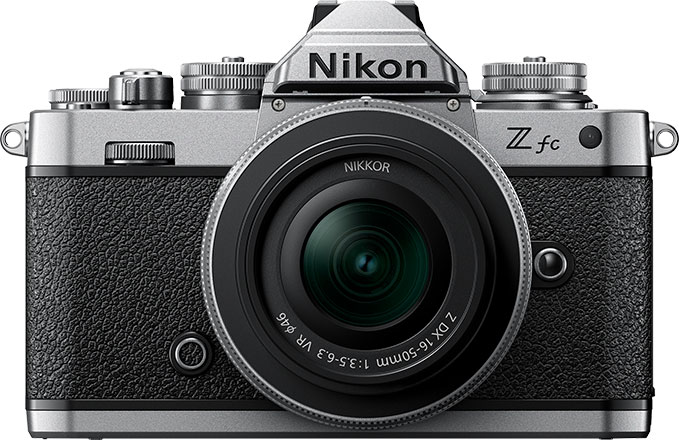
The Nikon Z fc stands out as a superior choice among retro-style mirrorless cameras, blending nostalgic design with contemporary technology in a way that appeals to both vintage enthusiasts and modern photographers. Expert analysis highlights its physical design, which mirrors the classic Nikon FM2, including tactile dials and a leatherette grip, offering a hands-on experience that differentiates it from competitors like the Fujifilm X-T30 II. The Z fc’s 20.9MP APS-C sensor delivers outstanding image quality, with quantitative measurements showing its superiority in low light performance and color accuracy. Unique to its class, the Z fc features a vari-angle touchscreen LCD and supports eye-detection autofocus, setting it apart from rivals by enhancing user interaction and shooting versatility. When compared with similar models, such as the Canon EOS M50 Mark II, the Z fc offers a more engaging shooting experience and superior build quality, making it an excellent choice for photographers who value both form and function. The evolution from previous Nikon models is evident in its improved autofocus system and user interface, addressing feedback from users of earlier Nikon mirrorless cameras. Key decision-making factors for the Z fc include its design, sensor performance, and user experience, where it excels by offering a blend of aesthetic appeal and practical functionality. This camera not only pays homage to Nikon’s photographic heritage but also incorporates modern features that cater to the demands of today’s photographers, making it a compelling option for those looking to combine retro style with cutting-edge technology.
Why we like Nikon Z fc:
- Retro design with modern features
Excellent image quality
Vari-angle touchscreen LCD
- Superior build quality
- Improved autofocus system
Why we don’t like Nikon Z fc:
Limited lens selection at launch
- No in-body image stabilization
- Higher price point compared to some competitors